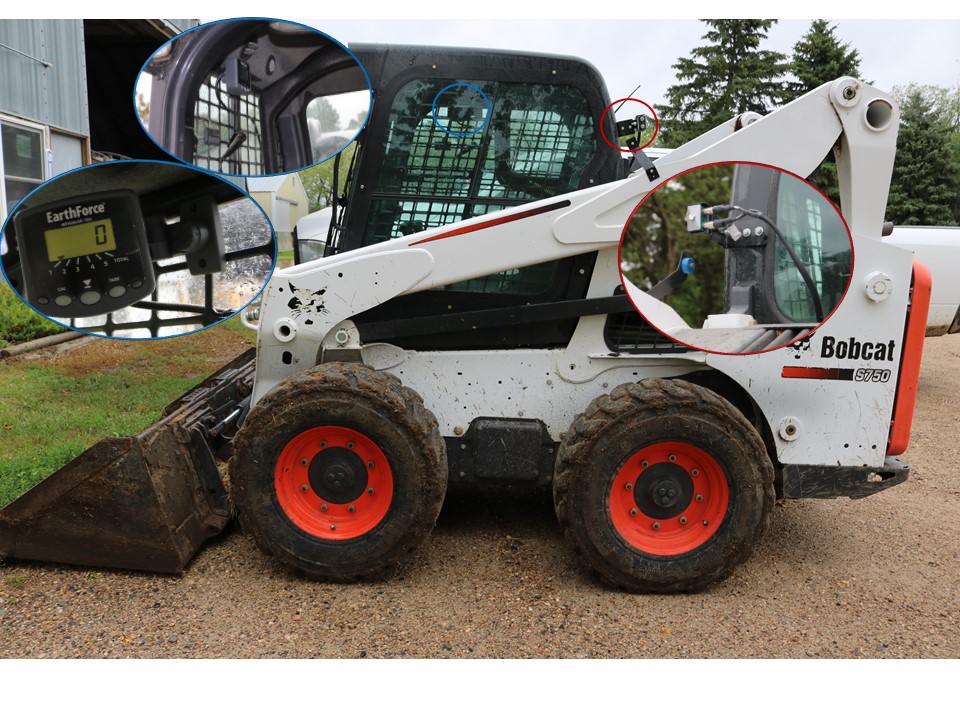Skid Steer/Front Loader Scale System
North Dakota State University does not endorse commercial products or companies even though reference may be made to tradenames, trademarks or service names.
During my first field season (2015) at the Carrington Research Extension Center (CREC) I had two trials with manure treatments. It took a lot of time driving to and from the scale to make sure the manure spreader had the correct amount of manure that I needed to apply to my plots. After that experience, I started to look at alternatives to make better use of my time, other than driving a tractor around pulling a manure spreader. My goal was to find an onboard scale system that could be installed on a skid steer to weigh the load in the bucket without having much impact (time wise) on the loading process. After some time looking for such product, I came across a system (Weighlog 100) made by a company in Nebraska and sold by Bobcat under the name of EarthForce. Since our skid steer is a Bobcat, we decide to purchase that system and get it installed (see photo below).
I believe a system such as this one can be very helpful to farmers and ranchers, since it can be used in many different ways. For those that have a nutrient management plan, for example, it would allow for one to keep records of how much manure is being applied to fields (record keeping). Another use for ranchers would be to measure how much feedstuff is being fed to livestock, such as the weight of hay bales. Due to the precision provided by the system (rounds to the nearest 10 lbs), this system is not considered legal for trade.

In a very simple way, the system mesures the weight of the load by measuring the hydraulic pressure in the hoses as the load is being lifted. There is a sensor mounted on the back of the skid steer cabin and one on the lifting arm (see photo). The system can be setup for either dynamic (measures weight as the bucket is being lifted) or static (bucket has to stop during the lifting process) measurements. We have it set up for dynamic measurements. When lifting a load, the sensor on the lifting arm passes in front of the sensor in the back of the cabin; the system takes a measurement and shows the weight on the screen inside the cabin (see photo). Taking a close look at the screen, one can see it has five different channels. That means the system can be set up for up to five different attachments. The system requires a calibration with a known weight for each attachment being used. For more reliable readings, the manufacturer advises to weigh the load on level surface if possible, while the machine is stationary, using the same RPM setting used during the calibration process, and it is important that the load do not bounce or jerk as it is lifted.
We used the system for the first time last spring. Having a pile of manure next to our plots and the onboard scale system on our skid steer improved tremendously our efficiency when applying manure to our plots, compared to the previous year. For more information about the Weighlog100, and other models, you can visit the manufacture’s website at http://loupelectronics.com/industrial-products/skid-steer-scales/weighlog-100.html. You can find other makes and models by doing an online search using phrases such as “skid steer onboard scale system”.
Paulo Flores, Ph. D.
Nutrient Management Specialist


